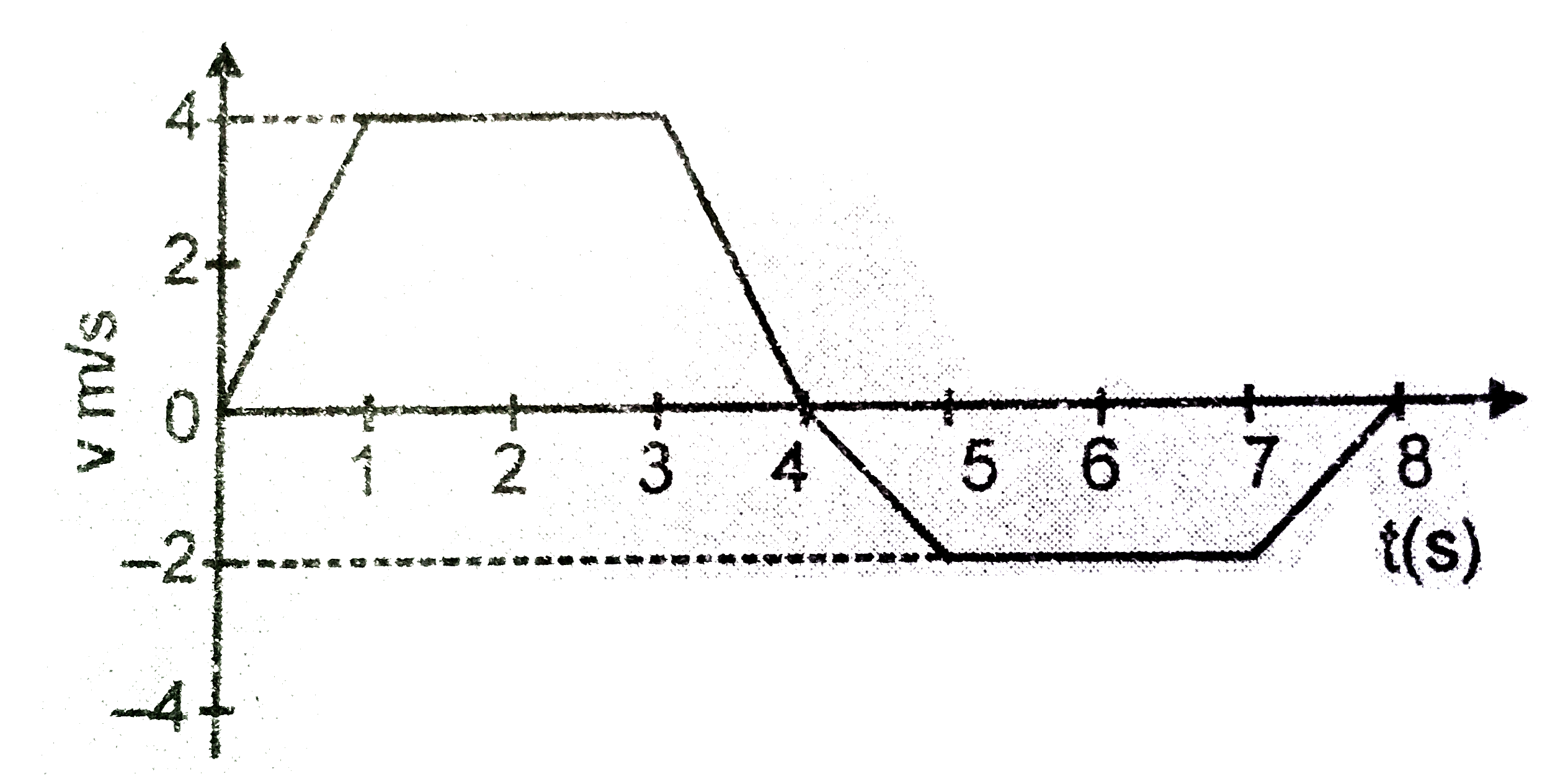A partical moves in a straight line with a velocity given by dxdt=x+1 (x is the distance described). The time taken by a particle to traverse a distance of 99 metres, is
The correct Answer is:10
To solve the problem, we need to find the time taken by a particle to traverse a distance of 99 meters, given that its velocity is expressed as dxdt=x+1.
1. Write the given equation:
dxdt=x+1
2. Separate the variables:
We can rearrange the equation to separate the variables x and t:
dxx+1=dt
3. Integrate both sides:
Now, we integrate both sides:
∫dxx+1=∫dt
The left side integrates to:
ln|x+1|+C1
and the right side integrates to:
t+C2
Therefore, we can combine the constants:
ln|x+1|=t+C
4. Solve for the constant C:
To find the constant C, we use the initial condition. Assume that at t=0, x=0:
ln|0+1|=0+C⟹ln1=C⟹C=0
Thus, the equation simplifies to:
ln|x+1|=t
5. Substitute x=99 to find t:
Now, we want to find the time t when x=99:
ln|99+1|=t⟹ln100=t
6. Simplify t:
We can express 100 as 102:
t=ln(102)=2ln10
7. Final answer:
Therefore, the time taken by the particle to traverse a distance of 99 meters is:
t=2ln10 seconds
dxdt=x+1
We can rearrange the equation to separate the variables x and t:
dxx+1=dt
Now, we integrate both sides:
∫dxx+1=∫dt
The left side integrates to:
ln|x+1|+C1
and the right side integrates to:
t+C2
Therefore, we can combine the constants:
ln|x+1|=t+C
To find the constant C, we use the initial condition. Assume that at t=0, x=0:
ln|0+1|=0+C⟹ln1=C⟹C=0
Thus, the equation simplifies to:
ln|x+1|=t
Now, we want to find the time t when x=99:
ln|99+1|=t⟹ln100=t
We can express 100 as 102:
t=ln(102)=2ln10
Therefore, the time taken by the particle to traverse a distance of 99 meters is:
t=2ln10 seconds
Topper's Solved these Questions
- DIFFERENTIAL EQUATIONSBOOK - VMC MODULES ENGLISHCHAPTER - DIFFERENTIAL EQUATIONSEXERCISE - JEE MAIN (ARCHIVE )
28 Videos
- DIFFERENTIAL EQUATIONSBOOK - VMC MODULES ENGLISHCHAPTER - DIFFERENTIAL EQUATIONSEXERCISE - JEE ADVANCE (ARCHIVE )
32 Videos
- DIFFERENTIAL EQUATIONSBOOK - VMC MODULES ENGLISHCHAPTER - DIFFERENTIAL EQUATIONSEXERCISE - LEVEL -2
39 Videos
- DIFFERENTIAL CALCULUS 2BOOK - VMC MODULES ENGLISHCHAPTER - DIFFERENTIAL CALCULUS 2EXERCISE - JEE Advanced (Archive)
81 Videos
- FUNCTIONSBOOK - VMC MODULES ENGLISHCHAPTER - FUNCTIONSEXERCISE - JEE Main & Advanced
8 Videos
Similar Questions
Knowledge Check
A particle moving along a straight line has a velocity v ms−1, when it cleared a distance of x m. These two are connected by the relation v = √49+x. When its velocity is 1ms−1, its acceleration is
A2ms−2B7ms−2C1ms−2D0.5ms−2
A particle starts moving in a straight line from rest with an acceleration (inm/s2) given by : a=12√x, where x is the distance travelled by the particle (in meters ) The velocity of the particle at the instant when its acceleration is 48m/s2 is .......m/s
View SolutionA particle moves in a straight line from origin. Its velocity time curve is shown. Find the distance of particle at the =8sec. From the origin and the distance travelled by the particle during first 8 seconds.

View SolutionA particle moves in a straight line with a uniform acceleration a. Initial velocity of the particle is zero. Find the average velocity of the particle in first 's' distance.
View SolutionA particle is performing simple harmonic motion on a straight line with time period 12 second. The minimum time taken by particle to cover distance equal to amplitude will be
View SolutionVelocity of a particle moving along a straight line at any time 't' is give by V=cos(π3t) . Then the distance travelled by the particle in the first two seconds is :
View SolutionA particle starts from point A, moves along a straight line path with an accleration given by a=2(4−x) where x is distance from point A. The particle stops at point B for a moment. Find the distance AB (in m). (All values are in S.I. units)
View SolutionA particle moves on a straight line with velocity 2 m/s covers a distance of 5 m, returns back to initial position along same path with velocity 4 m/s. The distance and displacement covered by particle are respectively.
View Solution
